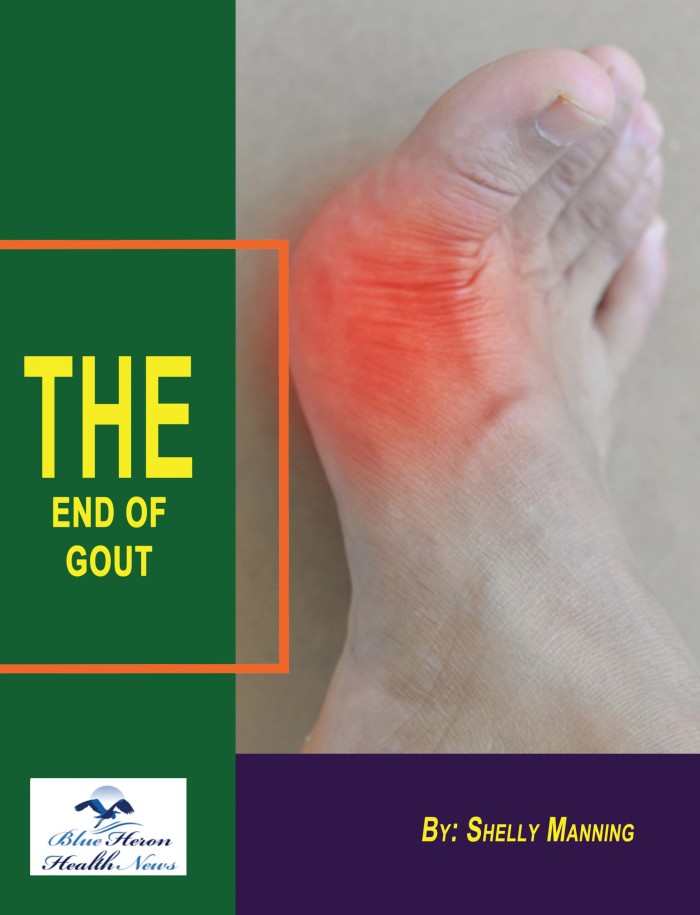
End Of GOUT Program™ By Shelly Manning The End of Gout Program is an intensive lifestyle guide and diet therapy to treat gout. It aids in minimizing and treating the uncomfortable and painful signs of gout naturally and safely. It will teach the impacted everything regarding the condition. This natural program eliminates triggers and factors that give rise to symptoms. The recommendations are honest, effective, safe, and science-based. The program treats you inside out with gout by attacking the cause. By just signing in, you get to access all the valuable information and make your life gout-free. The program has a 60-day money-back too for risk-free use. Several users have expressed their 100 percent satisfaction and results. Give it a try, and you are sure to be surprised by the fantastic results.
What parts of the body are most commonly affected by gout?
Gout most commonly affects the joints, but it can also affect other areas of the body over time, particularly if left untreated. The most frequently affected joints are the ones where uric acid crystals tend to accumulate, typically cooler areas of the body where blood flow is reduced. Here’s a breakdown of the parts of the body most commonly affected by gout:
1. Big Toe (First Metatarsophalangeal Joint)
- The big toe is the most classic and common site of a gout attack, known as podagra. This joint is often the first to be affected and is the hallmark of gout.
- The big toe is a cooler area of the body, which makes it more prone to the accumulation of uric acid crystals. The sudden buildup of these crystals triggers severe pain, swelling, redness, and inflammation.
2. Ankles
- Ankles are another common site for gout attacks. Gout in the ankle can cause significant pain and swelling, making walking or standing difficult.
- Similar to the big toe, the cooler temperature and weight-bearing nature of the ankle joint contribute to uric acid crystal formation.
3. Knees
- Knee joints are frequently affected by gout. When gout occurs in the knee, it can cause severe swelling, stiffness, and difficulty bending the knee.
- The knee is a large joint, and gout can cause noticeable inflammation, often leading to immobility and difficulty walking.
4. Wrists
- Gout can also affect the wrists, causing pain and swelling that can limit movement and make it difficult to perform everyday tasks, such as writing, typing, or lifting objects.
- Wrist gout may be less common than foot and knee involvement but can still be significantly painful.
5. Fingers
- Finger joints are another area where gout can strike, particularly in people with long-standing or untreated gout.
- Gout in the fingers can cause stiffness, pain, and swelling, often affecting multiple finger joints at the same time. In severe cases, chronic gout can lead to joint deformities in the fingers.
6. Elbows
- Gout can affect the elbow joint, specifically the olecranon bursa, a fluid-filled sac at the back of the elbow. This leads to a condition called olecranon bursitis, causing swelling, tenderness, and pain in the elbow.
- Elbow gout can make it difficult to fully extend or bend the arm.
7. Midfoot (Tarsal Joints)
- The midfoot, including the tarsal joints, can be affected by gout, causing pain on the top or middle part of the foot.
- Like the big toe and ankle, the midfoot is a common site for uric acid crystal deposition, leading to swelling and discomfort while walking.
Other Areas Potentially Affected by Gout:
While gout primarily affects the joints, it can also cause problems in other areas, especially in more advanced or untreated cases.
8. Tophi (Soft Tissue Deposits)
- Tophi are hard deposits of uric acid crystals that can form under the skin in people with long-term, untreated gout. They are commonly found in:
- The fingers
- The toes
- Around the elbows or knees
- The outer ear
- Tophi may not be painful, but they can cause joint deformities and interfere with joint movement. If left untreated, they can lead to chronic pain and joint damage.
9. Kidneys
- Kidney Stones: High levels of uric acid can lead to the formation of uric acid kidney stones, which can block the urinary tract, causing severe pain and potential kidney damage.
- Kidney Disease: Prolonged hyperuricemia (high uric acid levels) can contribute to kidney damage over time, especially if gout is poorly managed or untreated.
Conclusion:
Gout most commonly affects joints, particularly in the big toe, ankles, knees, wrists, and fingers. These areas are prone to uric acid crystal buildup due to cooler temperatures and decreased blood flow, leading to sudden and intense inflammation, pain, and swelling. Over time, untreated gout can lead to the formation of tophi in soft tissues and uric acid kidney stones. Proper management of uric acid levels can help prevent gout attacks and reduce the risk of complications affecting these parts of the body.
End Of GOUT Program™ By Shelly Manning The End of Gout Program is an intensive lifestyle guide and diet therapy to treat gout. It aids in minimizing and treating the uncomfortable and painful signs of gout naturally and safely. It will teach the impacted everything regarding the condition. This natural program eliminates triggers and factors that give rise to symptoms. The recommendations are honest, effective, safe, and science-based. The program treats you inside out with gout by attacking the cause. By just signing in, you get to access all the valuable information and make your life gout-free. The program has a 60-day money-back too for risk-free use. Several users have expressed their 100 percent satisfaction and results. Give it a try, and you are sure to be surprised by the fantastic results.